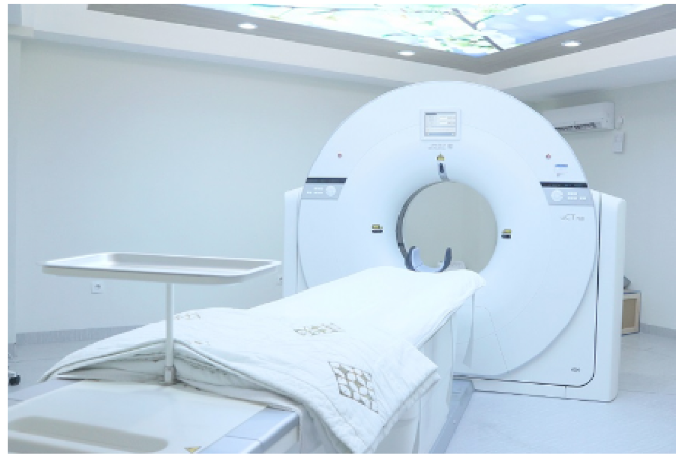CT scans, the good and the bad!
This topic is at the forefront of many discussions, and I get a lot of questions about the safety of mammograms and CT scans in general. Your doctor may order a CT scan to help with breast cancer prevention/diagnosis and health issues with the heart, brain, and bones as we age.
Harvard Medical School states, “The benefits of CT scans, when appropriate, far outweigh any radiation-associated cancer risks, and the risk from a single CT or nuclear imaging test is quite small.”
However, concerns are valid, especially since radiation exposure creates a cascade of DNA-damaging free radicals in the body. A CT scan does provide crucial diagnostic information that can save lives, but is it being overused, and are we then overexposed?
Can we counter the downside of radiation exposure?
There are over 80 million CT scans performed in the US every year. No radiation stays in the body; however, for nuclear medicine imaging, a small amount can stay in the body for a short period of time. CT scans are increasing by 14% yearly, and it is unclear how this heavy use will negatively affect patients.
If given the option, ensure you know the pros and cons of getting a CT scan for your health issue. Will it help your case? If it seems routine, question it and limit your exposure where possible!
One CT scan will most likely not cause cancer, but cellular damage that occurs will not disappear.

CT Radiation Exposure
Measuring the impact of CT scans on human tissue is difficult. The Sv (sievert) and mSv (millisievert) are units used to measure the radiation from a specific machine, including calculations of the biological effect of radiation. The chart below shows a few procedures and associated radiation exposure.
| Procedure | Average in mSv | Range in mSv |
| Bone Density Test | .001 | .00 – .035 |
| X-ray panoramic dental | .01 | .0002 – .1 |
| X-ray chest | .1 | .05 – .24 |
| Mammogram | .4 | .10 – .6 |
| X-Ray Abdominal | .7 | |
| CT head | 2 | .9 – 4 |
| Average natural yearly dose | 3 | Air Travel/Environment |
| Coronary artery calcification CT | 3 | |
| CT spine | 6 | 1.5 – 10 |
| Nuclear imaging bone scan | 6.3 | |
| CT chest | 7 | 4.0 – 18 |
| CT abdomen | 8 | 3.5 – 25 |
| CT colonoscopy | 10 | 4.0 – 13.2 |
| Coronary CT angiogram | 16 | 5.0 – 32 |
| Nuclear imaging, cardiac stress test | 40.7 |
https://www.health.harvard.edu/cancer/radiation-risk-from-medical-imaging
The risk of developing cancer due to radiation exposure depends on the part of the body exposed, age, and gender. A CT dose of 10mSv may be associated with an increased possibility of fatal cancer, 1 in 2000. The chance of fatal cancer through natural incidence was about 400 in 2000.
https://www.fda.gov/radiation-emitting-products/medical-x-ray-imaging/what-are-radiation-risks-ct
Regardless of the fatality statistics, all radiation exposure has collateral damage.
A study completed in 2016 looked at the efficacy of taking antioxidants before a radiologic procedure. They found that an antioxidant protocol significantly prevented DNA damage compared to the control group, who did not take antioxidants.
https://pubmed.ncbi.nlm.nih.gov/28034704/
In 2016, this is the protocol used in the clinical trial:
- Vitamin C (2 grams)
- Lipoic acid 600 mg
- N-acetylcysteine 1200 mg
- Beta-carotene 30 mg
Supplements have come a long way; this is how I would update the 2016 protocol for myself, which may not be for everyone. I would take it for five days prior to long air travel and CT scans or 5 days after if not possible to take it before. Please review the disclaimer.
- Astaxanthin from Live Durable Shield is a stronger antioxidant than B-carotene, vitamin E, and 6,000 times more free radical fighting power than vitamin C.
https://livedurable.com/products/durable-shield
- Lipoic acid 600 mg
- N-acetylcysteine 750 mg from Healthgevity is formulated with the right co-factors for the antioxidant to protect cells from damage.
https://healthgev.com/products/nac-750
Supplements and protocols are meant to bridge the gap between current levels and what the body needs to heal. They are meant to reduce the risk and severity of a health challenge. Outcomes cannot be predicted due to many factors within the body, underlying conditions, and lifestyle. It is always good to get into the habit of reviewing the research (not marketing), assessing your allergies, and especially assessing contraindications to the medication and supplements you’re taking. It is even better to get a professional opinion. https://qpwellness.com/consultations/
Disclaimer: The information in this blog is intended for educational purposes only. As a Board-Certified Doctor of Natural Medicine, I do not diagnose or treat disease, an area well attended by licensed physicians. Instead, I identify healing opportunities within the body. Once identified, function and health may be restored by correcting the underlying causes and conditions of health challenges. Rebalancing the body’s systems can be a proven stabilizer adjunctive to medical protocols. Not all recommendations may be appropriate for everyone. Due diligence and a consultation with your physician before engaging in alternative concepts or protocols are recommended.
To your health,
Dr. Gerda
Doctor of Natural Medicine and Holistic Cancer Consultant
